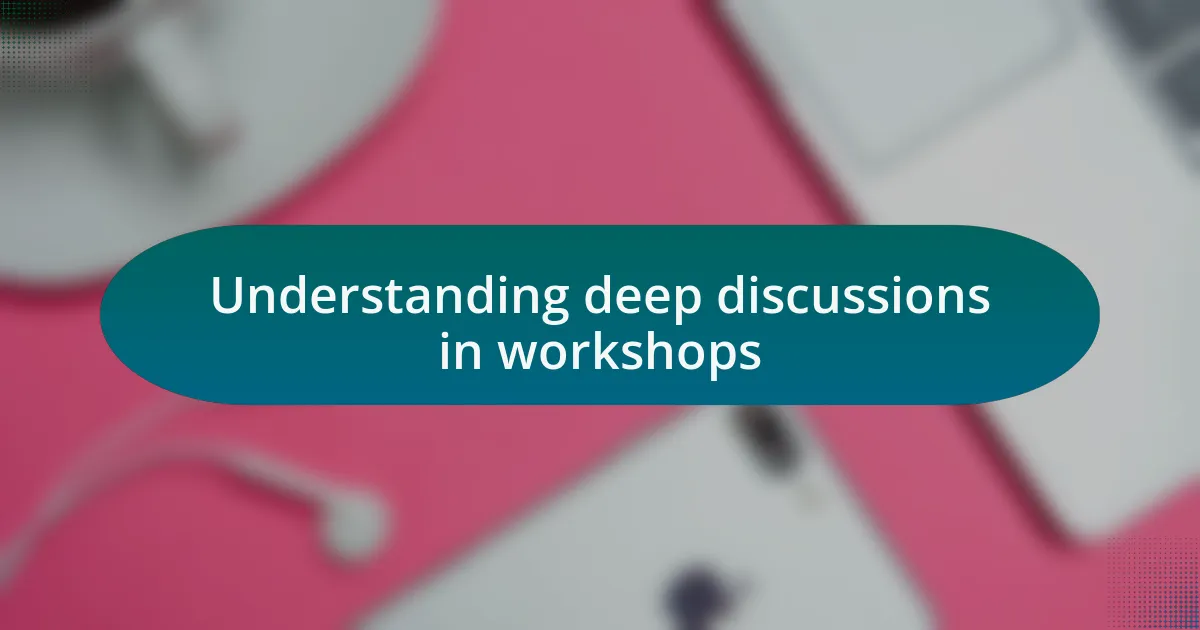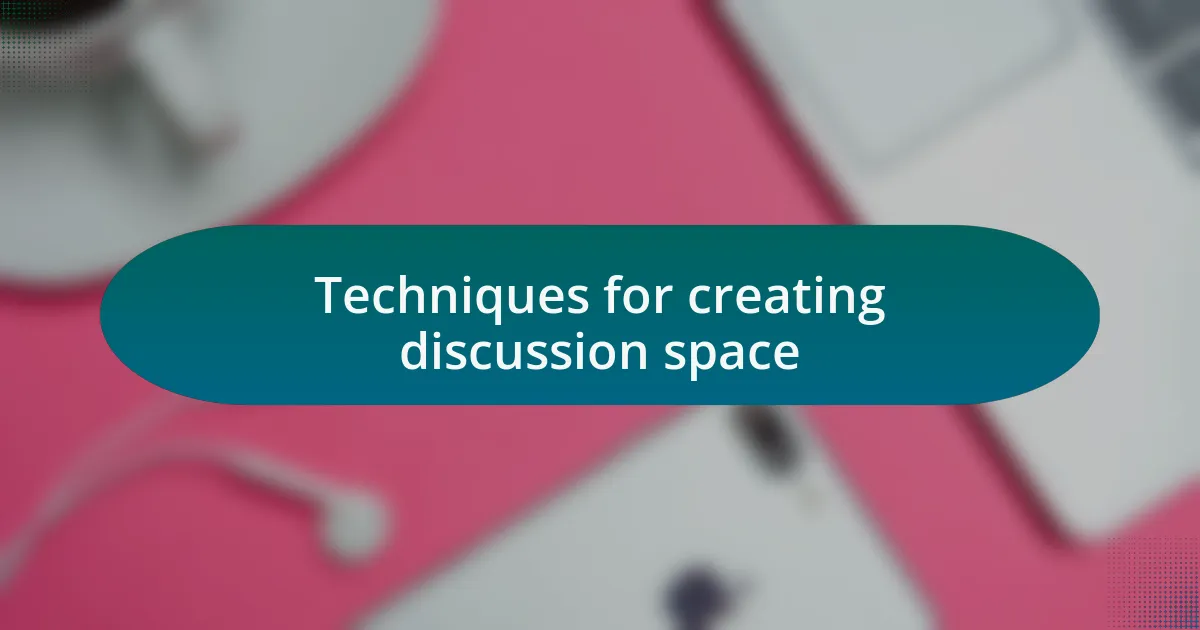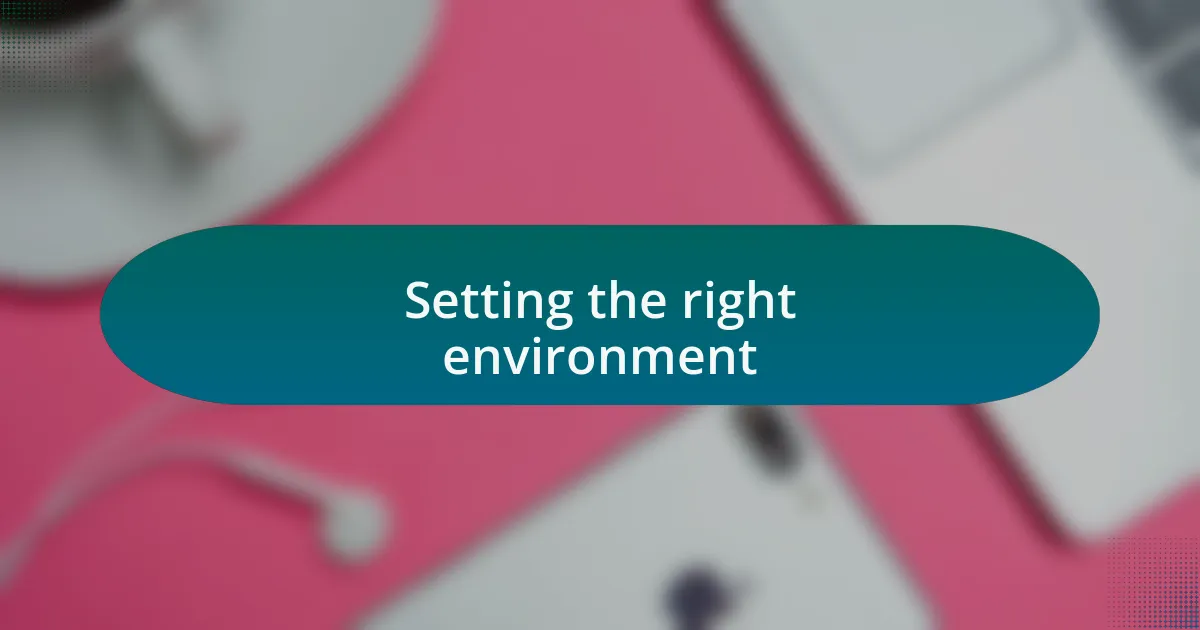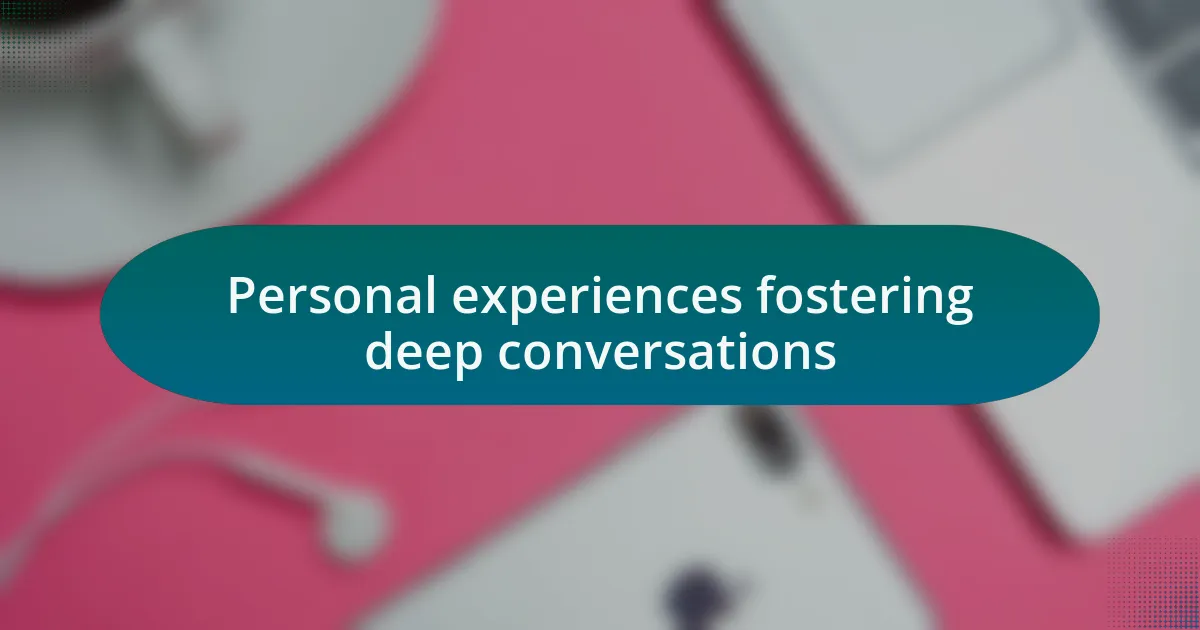Key takeaways:
- Deep discussions in workshops foster trust, vulnerability, and collaborative solutions among participants.
- Creating a conducive physical and emotional environment, such as seating arrangements and ambiance, significantly enhances engagement and dialogue depth.
- Techniques like open-ended questions, reflective pauses, and creative activities encourage personal connection and deeper conversations.
- Overcoming challenges, such as participant hesitance and managing time, is crucial for unlocking valuable insights and fostering a culture of openness.

Understanding deep discussions in workshops
Deep discussions in workshops often lead to transformative insights that can redefine team dynamics and project outcomes. I recall a workshop where I facilitated a dialogue about team values; the room shifted from surface-level conversation to a heartfelt sharing of experiences. This transition opened up pathways for trust and vulnerability, allowing us to tackle deeper issues that had been lingering beneath the surface.
Have you ever noticed how meaningful discussions can energize a group? I remember a session where participants shared their individual challenges related to a tech project. Listening to their stories not only helped others empathize but also sparked collaborative solutions that weren’t possible in a casual exchange. It’s in these moments that you truly see the power of deep discussions and the potential for collective growth.
It’s fascinating how the environment can affect the depth of conversation. In a previous workshop, I intentionally moved the seating to a circle, creating a sense of equality among participants. This simple change fostered a space where everyone felt empowered to speak up, proving that setting plays a crucial role in enriching discussions. How can we replicate such an environment in our workshops to ensure everyone’s voice is heard?

Importance of space in discussions
Creating a physical and emotional space for discussions is essential in fostering genuine dialogue. I remember a workshop where we dimmed the lights slightly and utilized soothing colors on the walls, which immediately set a tone of calmness. The difference in how participants engaged was remarkable; they seemed more willing to explore difficult topics and express their vulnerabilities.
Consider the impact of time on a discussion’s depth. I once allocated an extra hour to a particularly complex topic, encouraging participants to reflect before responding. This allowed for a richer exploration of ideas, with participants feeling less rushed and more inclined to share their thoughts. Isn’t it interesting how the mere act of slowing down can lead to deeper understanding and connection?
The layout of a workshop can influence engagement tremendously. In one instance, I arranged small breakout groups with comfortable seating and no barriers between participants. As they chatted, I could see individuals opening up and brainstorming with enthusiasm. It made me realize that when participants feel physically at ease, they’re far more likely to engage deeply. How can we harness these elements to create an optimal discussion space every time?

Techniques for creating discussion space
One effective technique I’ve found is employing open-ended questions that invite deeper thinking. During a recent workshop, I asked participants, “What assumptions are we making about this technology?” This question prompted a rich dialogue, as people began to explore their preconceived notions and shared personal stories. The resulting discussions were not just informative but also intimate, allowing everyone to connect on a human level. How powerful can a simple question be in unlocking such profound conversations?
Another technique that works wonders is utilizing reflective pauses. For instance, after presenting a challenging concept, I allowed a ten-minute silence for participants to process their thoughts. It felt a bit awkward at first, but soon you could hear the soft sound of pen on paper as individuals began jotting down their insights. This practice not only encouraged personal reflection but also signaled that their thoughts were valuable—creating a more inclusive atmosphere. Wouldn’t you agree that sometimes silence can speak volumes?
Lastly, I have seen the value in incorporating creative activities. In one workshop, I handed out art supplies and invited participants to illustrate their understanding of a particular topic. This approach eliminated barriers and reignited their sense of playfulness. I distinctly remember one participant’s drawing that sparked laughter and, ultimately, a lively discussion on the topic. It reminded me that creativity has the potential to unlock discussions in unexpected ways. How can we continually innovate our methods to keep discussions fresh and engaging?

Setting the right environment
Creating the right environment is essential for sparking meaningful dialogue. I remember one workshop where I dimmed the lights and arranged the seating in a circle. This simple change transformed the atmosphere, making everyone feel equal and more relaxed. When participants feel physically comfortable, they’re more likely to open up and share their thoughts. Have you ever noticed how a cozy setting can change the energy in a room?
Another aspect I focus on is the ambiance. During one event, I played soft background music as participants arrived, creating a welcoming atmosphere. This seemed to ease the initial tension, allowing attendees to engage in casual conversations before diving into the main topics. It reminded me of how our surroundings subtly influence our mood. Who would have thought a little music could pave the way for deeper discussions?
Finally, I find that setting clear intentions at the beginning of a workshop fosters a sense of purpose. Once, I began a session with a statement of values, emphasizing respect and openness. Instantly, you could feel the shift—everyone appeared more invested in the discussions. It made me realize that transparency and safety are vital ingredients in crafting an environment conducive to profound interactions. Have you considered how establishing a shared purpose might impact the outcomes of your workshops?

Engaging participants effectively
Engaging participants effectively requires not just a physical setup but also heartfelt connection. In one workshop, I initiated a round of personal sharing where each participant had the chance to express a challenge they were facing in their work. I was surprised by the vulnerability that emerged from this simple question. It was as if the room transformed into a safe haven, with everyone forging deeper bonds through shared experiences. Have you ever witnessed how shared struggles can ignite empathy and solidify group dynamics?
In another session, I employed interactive tools like live polls and Q&A segments. I still remember the buzz in the room when participants could see their opinions reflected in real-time results. It sparked animated discussions that flowed organically. Harnessing technology in this way creates an atmosphere of collective engagement, making it feel like each voice truly matters. Who doesn’t want to feel heard and validated, especially in a professional setting?
Finally, I’ve learned that humor can be a powerful tool for engagement. During a particularly serious workshop, I decided to break the ice with a lighthearted anecdote from my own career journey—a moment where I stumbled over my words in a presentation. The laughter that followed not only lightened the mood but also encouraged participants to share their own blunders. It’s fascinating how laughter can dissolve barriers and lead to more open, honest discussions. Have you considered how embracing the lighter side of things can transform the tone of your workshops?

Overcoming common challenges
Creating an environment conducive to deep discussions often comes with hurdles, especially when some participants may feel hesitant to share. I recall a workshop where one individual sat quietly, seemingly disengaged. I approached them privately and encouraged them to share their perspective in smaller groups. It turned out they had insightful ideas that ignited vibrant conversations among their peers. Isn’t it interesting how sometimes a nudge in a more intimate setting can unlock hidden treasures of thought?
Another challenge can be managing time effectively during discussions. I’ve found that scheduled ‘think-pair-share’ moments can be invaluable. This method allows participants to formulate their thoughts before opening the floor for full group dialogue. During one session, this structure led to a breakthrough moment when a participant shared a unique solution based on their pair’s conversation, which had otherwise remained silent. Have you thought about how just a slight shift in structure can lead to richer dialogues?
Finally, I often encounter participants who feel uncomfortable with vulnerability in discussions. To ease this, I share a personal story showcasing my own struggles and lessons learned. I remember once opening up about a project failure early in my career and the discomfort it brought—surprisingly, it inspired others to share their own mishaps. It illustrates beautifully that vulnerability can be contagious. How often do we underestimate the power of honesty to foster a culture of openness?

Personal experiences fostering deep conversations
One of my favorite ways to spark deep conversations is through creative icebreakers. In one workshop, I asked participants to partner up and share an object from their desk that represents their work philosophy. The stories that emerged were fascinating. One participant shared a simple pen, explaining how it reminded him of the importance of clarity and precision. This exercise transformed the atmosphere, allowing everyone to open up based on a shared vulnerability. Have you ever noticed how personal objects can serve as windows into our experiences?
During a tech event focused on innovation, I implemented a roundtable discussion format instead of the traditional presentation style. I arranged seating in a circle to encourage eye contact and accountability; it worked wonders! As we went around sharing ideas, a quiet participant began to share a wild concept he had been sitting on. That moment was a turning point, as the group rallied around his vision, building on it collaboratively. It made me realize how important physical space is in fostering openness—how has your seating arrangement influenced the flow of conversation?
I also learned that silence can be a powerful tool in deep discussions. In one transformative workshop, when the conversation started to dwindle, I embraced a few moments of silence. Rather than rushing to fill the void, I encouraged the group to reflect on the last point made. Surprisingly, after a brief pause, a participant revealed a profound insight that shifted the entire discussion. It showed me that sometimes, allowing for a little discomfort gives everyone the space to dig deeper into their thoughts. Have you experienced the magic that silence can bring to a conversation?